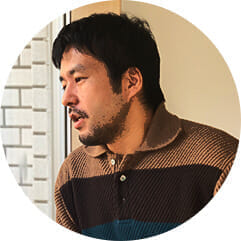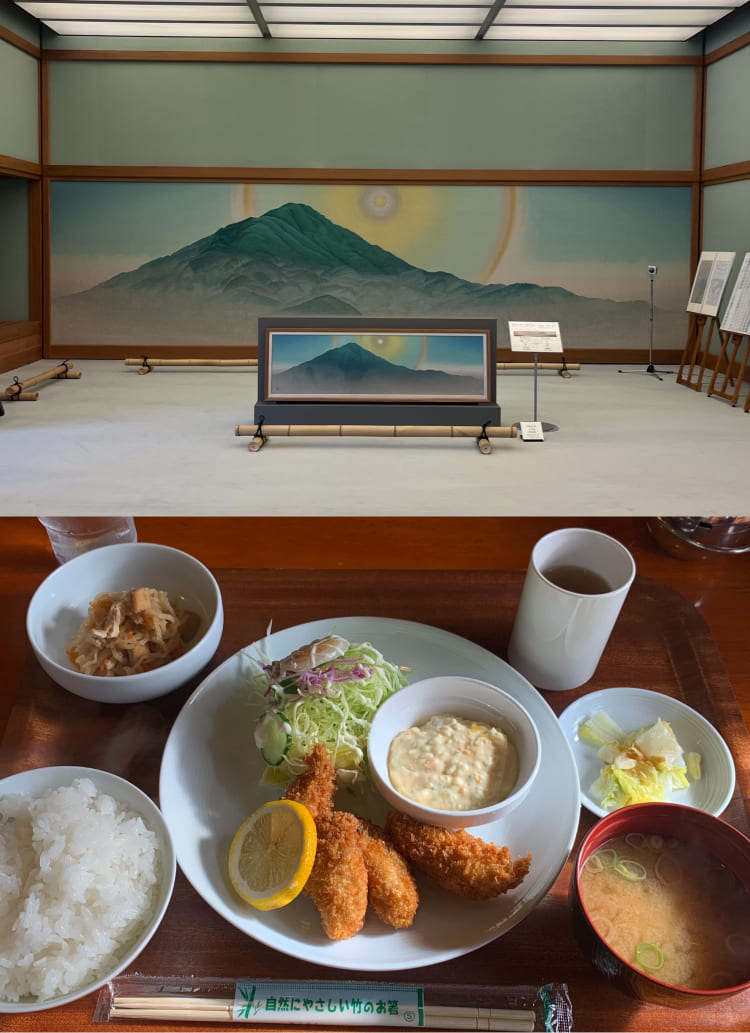
Kenju Sato has pioneered a new genre of introducing strange things from around the world from a natural history and aesthetic point of view, rather than introducing them in a materialistic way, as in "Kaikai Heritage" and "Kaikai Heritage 2," and appearing on the TV programs "Crazy Journey" and "Tamori Club.
Just the other day, I just did a book on Gunkanjima, "THE ISLAND Gunkanjima" , an island that was closed in 1974, registered as a World Heritage Site in 2015, and is always on the tip of the tongue among Japan's ruin enthusiasts. Mr. Sato, who has seen many ruins around the world, tells us what Gunkanjima really is. We spoke with Mr. Sato himself (some of the photos in this article include unpublished "other cuts").

Kenju Sato
Photographer . Graduated from Musashino Art University. . Photographs and writes about "strange things" around the world from a natural history and aesthetic point of view. His books include "Kikai Isan" and "Kikai Isan 2" (, "Sekai no Ruins" (, Asuka Shinsha ), "Sekai Fushigi Chizu" and "Satellite" (, both from Asahi Shinbun Publishing ), "Kikai Kiko" (, Kadokawa Gakugei Shuppan ), " TRANSIT Special Edition ~Beautiful Mysterious World~" ( Kodansha ), "Searching for Yukio in the Himalayas", "To the Town Where the Flying Saucer Crashed", "Daijiro Moroboshi: The World of Mad Men" ( all Kawade Shobo Shinsha ), etc. . He has appeared on TV Asahi's "Tamori Club," TBS's "Crazy Journey," NHK's "Nippon no Dilemma," NHK Radio 1's "Radio Adventure Kaikai Heritage," and many others.
First of all, what does Gunkanjima mean to you?
Kenju Sato ( , ): I am like a fan. This time, Nagasaki City sponsored me to publish this book, but many people around the world are already fascinated by this island, and I am one of them. The obi also says "King of Ruins," but this is not a phrase I invented. I don't think anyone who loves ruins would disagree with that, and I think it's probably true even if you include people from overseas. I think I have been to many ruins around the world, but every time I land on the island, I still feel that this place is the best ruin in the world after all.

. You have a photo book, but you also have some vivid images from gravure magazines of the time, don't you?
Sato: Of course, everyone knows about Gunkanjima. . and the image is somewhat familiar as well. But the history and reality of the island is not so well known. I think most people have a vague image of Gunkanjima as a sad island because of its spectacular visuals, but actually it is not so. Because the mines were profitable, the rooms had TVs and washing machines, and the buildings themselves were the most advanced in Japan at the time, with Japan's first steel-framed condominiums being built.

I had an image of the life of poor coal miners since the mine was closed.
Sato: I think it was the exact opposite. It was rather a very money-generating island. If we look at the ruins of the world, if Gunkanjima is the yokozuna of the east, then the yokozuna of the west is the ruins of Pripyat City, which was destroyed by the Chernobyl nuclear power plant. The reason for this is that when the plant exploded, the government announced that it was a fire and that the residents should evacuate temporarily so that they would not panic, and that they could come back. But the truth is that they couldn't come back, so the things are still there. Gunkanjima, on the other hand, was closed while the economy was booming, and the residents left the island, leaving various things behind as they were. So as a result, the two are similar in terms of scenery, but Pripyat City is a tragedy, and Gunkanjima is not such a tragedy. . I think that kind of correlation between history and scenery is an interesting aspect of the ruins.

It is indeed interesting to see the cover of the book, and it is not a horrifying or sad ruin. It has a beautiful ocean view (laughs).
Sato: That's right. At first glance, the view does not even look like an abandoned building, but if you look closely, you can see that it is an amazing abandoned building, and the ocean is just beyond it.

Why did you decide to shoot on Gunkanjima at this time?
Sato: There are two reasons. Gunkanjima has already begun to collapse and has been slowly decaying over the past few decades. The city of Nagasaki has begun preservation activities for the landscape, and these activities are meaningful and wonderful, but I also want to photograph Gunkanjima as it was before it was leveraged. For example, you can land on Gunkanjima if you take a tour, but for safety reasons, the area where the ruins are spread out is off-limits to tours (in the photo book, I entered the off-limits area with the cooperation of Nagasaki City to take photos). Although it is a difficult issue of original landscape and artificial preservation, I wonder if this might have been the last opportunity to take pictures of the area. Another reason is that drone cameras have become more sophisticated in the past year or two, and have matured to a level where they can be used in a photo book. I am also talking with people in Nagasaki City to see if we can do something to support the preservation efforts of Gunkanjima through events related to this book.

Many books have been published on Gunkanjima . Why did you choose Gunkanjima?
Sato: As I mentioned in the afterword, the impetus for this project came from my encounter with a certain poem about Gunkanjima. Simply put, the poem's message and my own feelings about Gunkanjima were similar. Although Gunkanjima is a ruin, I don't feel that it is connected or disconnected from the city we live in today. The reason I chose the title "THE ISLNADS," or "an island," is because I wanted to show Gunkanjima not as a special place, but as a universal scene. Also, since the Japanese archipelago is also an island, it is also meant to be a microcosm of the island of Japan itself. This island may look like it could be anywhere, but it is nowhere, and yet it is also the Japanese archipelago itself, which is a contradictory and ambivalent nuance. It sounds logical when put into words, but in fact, I think it is something that everyone feels vaguely when they see the Gunkanjima in front of them.
Why does Gunkanjima attract so many people?
Sato: In Japan, ruins, especially industrial heritage, are often removed at some point or repaired to become cultural heritage, so there are many beautiful ruins, which is a strange thing to say. . But there is probably nothing like this in the world, on this scale, untouched for a while, in an island location, with even more buildings cluttering it up. It is a very strange landscape, where there is no trace of human presence, but there are many traces of human life. It is considered a sacred place in the context of ruins, and on the other hand, it is also recognized as a World Heritage site. . so to speak, it is recognized both officially and unofficially (laughs). It has that special charm, doesn't it?
Text_Shinri Kobayashi
THE ISLAND Gunkanjima
Author: Kenju Sato
Price: ¥2,376 in TAX
Publisher: Asahi Shimbun Publishing
On sale: January 19
Page in Amazon








